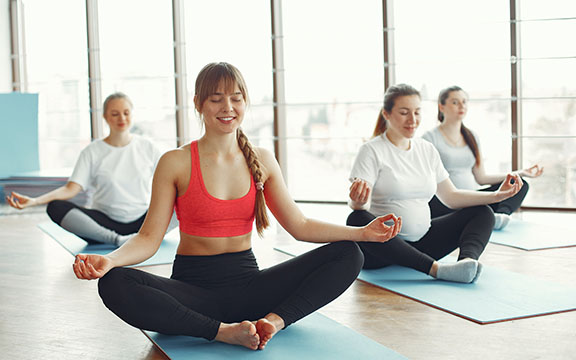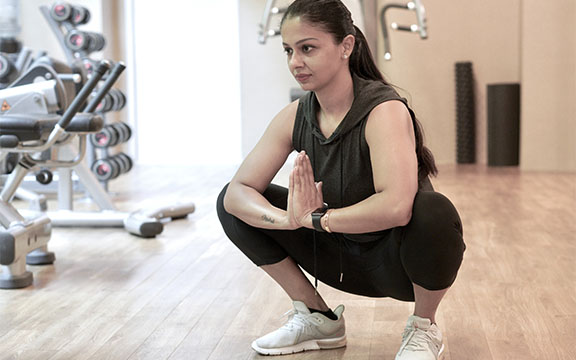
Baddha Konasana (photo by Gustavo Fring on Pexels.)
It’s been proven time and again that Yoga practice can have incredible effects on all aspects of your being. Stretching your physical body and giving space to your heart and mind to let go of the negativity first come to mind, but Yoga goes deeper than that. More than anything, it’s a practice that allows you to tap into your true potential and live a healthy and long life.
Doing any type of Yoga can help with an array of chronic health conditions like urinary incontinence. Regularly moving your body through specific asanas can strengthen your pelvic floor and make you feel more comfortable in your own skin. Empowering your body through Yoga will enable you not only to mitigate the consequences of urinary incontinence but also to show up in your life as the best version of yourself.
Unlocking the Power Within through Yoga
Yoga is, first and foremost, a deeply spiritual practice. Through breathing, meditation, movement, and poses, you get to look within and experience who you truly are when all the obligations, conditioning, and habits are peeled away. You give yourself permission to get your ego and chattering thoughts out of the way and just be. It’s not always easy, but it’s wonderfully liberating.
Unlocking your power through Yoga means connecting with all your parts, the good and the more challenging. As you get to know and love yourself, everything in your life realigns to fit this mindset. People often talk about how Yoga can do wonders for stress relief, back pain, weight loss, and eating habits.
This is all very true because Yoga is a catalyst that lets you tune into the present moment, and fully feel who you are and what you can accomplish.
Once you’ve moved, breathed, and meditated through strong emotions and patterns that no longer serve you, you’ll realize that you can let go of them and consciously move on to those things that better serve you in your life.
And as you’re holding and breathing through your side-plank pose, you start to realize that your physical body is the one that sustains your confidence, self-care, discipline, and health. From there, all you have to do is focus on healing your urinary incontinence and tweak the practice in a way that best serves your goal.
How Yoga Helps with Urinary Incontinence
At a glance, the connection between Yoga and incontinence might not be the easiest one to make, but when you take a better look, it makes complete sense. Urinary incontinence is the uncontrolled leakage of urine that can happen either because of an overactive bladder or because of some type of physical stress that pushes the urine out. The amount of urine can vary and increase over time if the condition goes untreated.
Incontinence doesn’t happen only to the elderly but can affect women of all ages. There are ways to manage the symptoms, like wearing adult diapers and bladder training, but you can also treat the cause of it—a weak pelvic floor. This is where Yoga comes in because it makes you strong, flexible, and in control of your body.
The loss of control over bodily functions is not easy to deal with, not to mention that it can make your life difficult and everyday situations uncomfortable. Thankfully, you can train and strengthen your pelvic floor by doing a series of poses that directly target the problematic area. Not only that, but the overall improved muscle tone allows you to readjust your body to function and move better.
In doing that, you make things easier for your bladder, because you’ve got muscles that are taking the pressure off it, allowing it to function normally. Add to that the increased awareness and presence that comes with regular Yoga practice, and you’ve got everything you need.
Which Yoga poses help with urinary incontinence?
Each Yoga pose moves the energy in your body in a specific way, releasing pressure and blockages as it flows. That’s why it’s best to have a holistic approach to your practice and do a variety of asanas, including the ones that are particularly beneficial for strengthening the pelvic floor. Here are a few of them to help you get started.
● Baddha Konasana (Bound Angle Pose)
One of the benefits of the Bound Angle Pose is that your reproductive and urinary systems are the main impacted areas. As you open your hips, your bladder gets the chance to contract and strengthen in the process, which is the ultimate goal when taking control of your bladder.
● Utkatasana (Chair Pose)
The Chair Pose lets you strengthen your lower body, namely your legs, hips, and lower abdomen muscles, which can directly help with strengthening your pelvic floor as well. Stronger pelvic floor, less chance of unwanted leakage.
● Mula Bandha (Root Lock)

Malasana (photo by Aparna Johri on Unsplash.)
This is a subtle internal lock or contraction of the pelvic floor muscles. It can be practiced in a seated or lying down position. Regular practice can strengthen these muscles, leading to improved stability and support for the pelvic organs.
By strengthening these muscles through Mula Bandha, you may experience improved bladder function and better control over urinary urges. This can be particularly helpful for individuals dealing with issues such as urinary incontinence or frequent urination.
● Malasana (Garland Pose)
Malasana, also known as Garland Pose or Yogi Squat, offers several benefits for the body and mind. The asana engages the pelvic floor muscles, which can help strengthen and tone them. This can be beneficial for individuals experiencing issues such as pelvic floor weakness, urinary incontinence, or postpartum recovery. Holding the squatting position in Malasana engages the muscles of the legs, including the quadriceps, hamstrings, and glutes. It also activates the muscles of the core and lower back, contributing to overall lower body strength and stability.
● Setu Bandha Sarvangasana (Bridge Pose)
The Bridge Pose is excellent for energizing your whole body, especially your abdomen, hips, and with it, your urinary tract. As you raise your hips toward the sky, your attention will shift to this area of your body, and you can notice how you feel as your pelvic floor muscles squeeze and relax. The Bridge Pose allows you to hold your focus on your bladder and pelvic floor muscles as you’re strengthening them, which is its main benefit.
● Ashwini Mudra (Horse Gesture)
Ashwini Mudra is a yogic practice that involves contracting and releasing the anal sphincter muscles. While it is not a specific asana (pose), it is often practiced in a seated position where the rhythmic contraction and relaxation of the anal sphincter muscles can stimulate blood flow and energy (prana) in the pelvic region.
Regular practice can help strengthen these muscles, which play a crucial role in supporting the bladder and maintaining urinary control.
These poses are excellent for strengthening your pelvic floor and could directly diminish the symptoms of urinary incontinence due to various factors including dehydration and incontinence, age related, weakening of pelvic muscles etc. For more diversity, you can also try the Yogi Squat Pose, the Warrior Pose, and the Triangle Pose.
Remember, it’s important to approach these poses with patience and grace and do them in a way that feels good to you. If you have any concerns or specific medical conditions, it’s advisable to consult with a qualified Yoga therapist or healthcare professional for personalized guidance.
Keep your awareness as you’re moving from one pose to another, staying present and adjusting as necessary. Everyone’s body is different so give yours the space to get into a flow that feels good and will ultimately serve the purpose of providing incontinence relief.
 About the Author:
About the Author:
Olivia Wolfe is a dedicated writer and nursing intern with a passion for simplifying information on gut health, fitness, and chronic conditions based on her firsthand experiences. With an academic background in healthcare and a knack for communication, Olivia strives to empower her readers by breaking down complex topics into accessible and relatable content.


